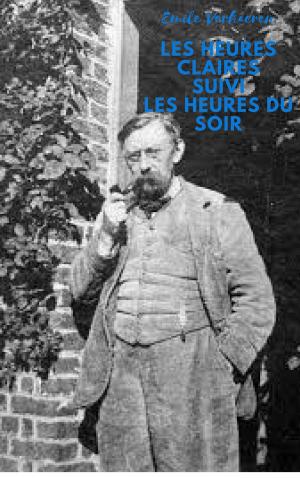| Author: | Paul Bourget | ISBN: | 1230002420448 |
| Publisher: | Jwarlal | Publication: | July 10, 2018 |
| Imprint: | Language: | French |
| Author: | Paul Bourget |
| ISBN: | 1230002420448 |
| Publisher: | Jwarlal |
| Publication: | July 10, 2018 |
| Imprint: | |
| Language: | French |
The evolution of the modern horse-shoe from the primitive foot-gear for draught animals used in ancient times furnishes an interesting subject for investigation. Xenophon and other historians recommended various processes for hardening and strengthening the hoofs of horses and mules,[1] and from this negative evidence some writers have inferred that the ancients were ignorant of farriery. It seems indeed certain that the practice of protecting the feet of horses was not universal among the Greeks and Romans. Fabretti, an Italian antiquary, examined with care the representations of horses on many ancient columns and marbles, and found but one instance in which the horse appeared[2] to be shod;[2] and in most specimens of ancient art the iron horse-shoe is conspicuous by its absence. But in the mosaic portraying the battle of Issus, which was unearthed at Pompeii in 1831, and which is now in the Naples Museum, is the figure of a horse whose feet appear to be shod with iron shoes similar to those in modern use;[3] and in an ancient Finnish incantation against the plague, quoted in Lenormant’s “Chaldean Magic and Sorcery,” occur these lines:—
O Scourge depart; Plague, take thy flight … I will give thee a horse with which to escape, whose shoes shall not slide on ice, nor whose feet slip on the rocks.
No allusion to the horse-shoe is made by early writers on veterinary topics. But, on the other hand, there is abundant testimony that the ancients did sometimes protect the feet of their beasts of burden. Winckelmann, the Prussian art historian, describes an antique engraved stone representing a man holding up a horse’s foot, while an assistant, kneeling, fastens on a shoe.[4] In the works of the Roman poet Catullus occurs the simile of the iron shoe of a mule sticking in the mire.[5] Contemporary historians relate that the Emperor Nero caused his mules to be shod with silver,[6] while golden[3] shoes adorned the feet of the mules belonging to the notorious Empress Poppæa.[7] Mention of an iron horse-shoe is made by Appian,[8] a writer not indeed remarkable for accuracy; but the phrase “brasen-footed steeds,” which occurs in Homer’s Iliad, is regarded by commentators as a metaphorical expression for strength and endurance. Wrappings of plaited fibre, as hemp or broom, were used by the ancients to protect the feet of horses.[9] But the most common form of foot covering for animals appears to have been a kind of leathern sock or sandal, which was sometimes provided with an iron sole. This covering was fastened around the fetlocks by means of thongs, and could be easily removed.[10]
Iron horse-shoes of peculiar form, which have been exhumed in Great Britain of recent years, have been objects of much interest to archæologists. In 1878 a number of such relics shaped for the hoof and pierced for nails were found at a place called Cæsar’s Camp, near Folkstone, England.[11] In the south of Scotland, also, ancient horse-shoes have been found, consisting of a solid piece of iron made to cover the whole hoof and very heavy. In the year 1653 a piece of iron resembling a horse-shoe, and having nine nail-holes, was[4] found in the grave of Childeric I., king of the Franks, who died A. D. 481. Professor N. S. Shaler believes that the iron horse-shoe was invented in the fourth century, and from the fact that it was first called selene, the moon, from its somewhat crescent-like shape, he concludes that it originated in Greece.[12] But even in the ninth century, in France, horses were shod with iron on special occasions only,[13] and the early Britons, Saxons, and Danes do not appear to have had much knowledge of farriery. The modern art of shoeing horses is thought to have been generally introduced in England by the Normans under William the Conqueror.[14] Henry de Ferrars, who accompanied that monarch, is believed to have received his surname because he was intrusted with the inspection of the farriers; and the coat-of-arms of his descendants still bears six horse-shoes.[15]
The evolution of the modern horse-shoe from the primitive foot-gear for draught animals used in ancient times furnishes an interesting subject for investigation. Xenophon and other historians recommended various processes for hardening and strengthening the hoofs of horses and mules,[1] and from this negative evidence some writers have inferred that the ancients were ignorant of farriery. It seems indeed certain that the practice of protecting the feet of horses was not universal among the Greeks and Romans. Fabretti, an Italian antiquary, examined with care the representations of horses on many ancient columns and marbles, and found but one instance in which the horse appeared[2] to be shod;[2] and in most specimens of ancient art the iron horse-shoe is conspicuous by its absence. But in the mosaic portraying the battle of Issus, which was unearthed at Pompeii in 1831, and which is now in the Naples Museum, is the figure of a horse whose feet appear to be shod with iron shoes similar to those in modern use;[3] and in an ancient Finnish incantation against the plague, quoted in Lenormant’s “Chaldean Magic and Sorcery,” occur these lines:—
O Scourge depart; Plague, take thy flight … I will give thee a horse with which to escape, whose shoes shall not slide on ice, nor whose feet slip on the rocks.
No allusion to the horse-shoe is made by early writers on veterinary topics. But, on the other hand, there is abundant testimony that the ancients did sometimes protect the feet of their beasts of burden. Winckelmann, the Prussian art historian, describes an antique engraved stone representing a man holding up a horse’s foot, while an assistant, kneeling, fastens on a shoe.[4] In the works of the Roman poet Catullus occurs the simile of the iron shoe of a mule sticking in the mire.[5] Contemporary historians relate that the Emperor Nero caused his mules to be shod with silver,[6] while golden[3] shoes adorned the feet of the mules belonging to the notorious Empress Poppæa.[7] Mention of an iron horse-shoe is made by Appian,[8] a writer not indeed remarkable for accuracy; but the phrase “brasen-footed steeds,” which occurs in Homer’s Iliad, is regarded by commentators as a metaphorical expression for strength and endurance. Wrappings of plaited fibre, as hemp or broom, were used by the ancients to protect the feet of horses.[9] But the most common form of foot covering for animals appears to have been a kind of leathern sock or sandal, which was sometimes provided with an iron sole. This covering was fastened around the fetlocks by means of thongs, and could be easily removed.[10]
Iron horse-shoes of peculiar form, which have been exhumed in Great Britain of recent years, have been objects of much interest to archæologists. In 1878 a number of such relics shaped for the hoof and pierced for nails were found at a place called Cæsar’s Camp, near Folkstone, England.[11] In the south of Scotland, also, ancient horse-shoes have been found, consisting of a solid piece of iron made to cover the whole hoof and very heavy. In the year 1653 a piece of iron resembling a horse-shoe, and having nine nail-holes, was[4] found in the grave of Childeric I., king of the Franks, who died A. D. 481. Professor N. S. Shaler believes that the iron horse-shoe was invented in the fourth century, and from the fact that it was first called selene, the moon, from its somewhat crescent-like shape, he concludes that it originated in Greece.[12] But even in the ninth century, in France, horses were shod with iron on special occasions only,[13] and the early Britons, Saxons, and Danes do not appear to have had much knowledge of farriery. The modern art of shoeing horses is thought to have been generally introduced in England by the Normans under William the Conqueror.[14] Henry de Ferrars, who accompanied that monarch, is believed to have received his surname because he was intrusted with the inspection of the farriers; and the coat-of-arms of his descendants still bears six horse-shoes.[15]















